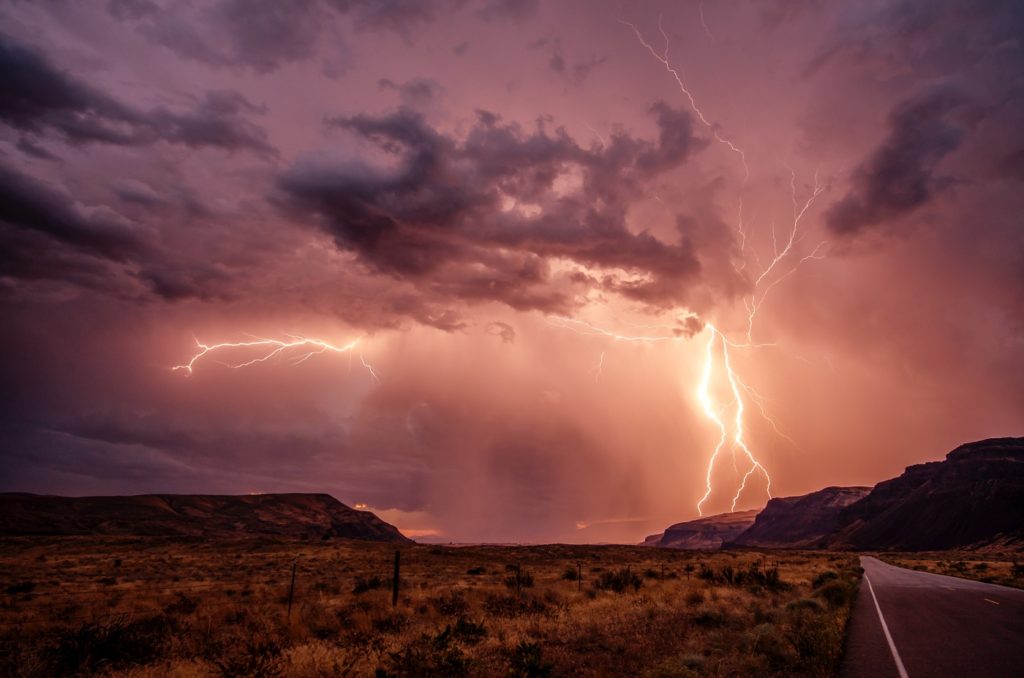In 1952, London was engulfed in what came to be known as the Great Smog. For five days straight, a thick mist of dust mixed with fog descended on the inner city, reducing visibility, crippling mobility, killing more than 10,000 people, and sickening ten times that number. And as hospitals filled up and law and order broke down, politicians scrambled for solutions to relieve the public pressure gathering around them, with one major exception—at least, that’s how the popular Netflix series The Crown portrays it.
It seems that Winston Churchill, who led the British against the threat of Nazism, had very little sympathy for a fight against fog. In the show, as the ratio of sulfur dioxide in the air intensifies and his advisors suggest action, he simply responds
It’s fog. Fog is fog. It comes and it goes away. . . . Too much sunshine and they call it a drought. . . . Too much rain, and they call it a deluge. . . . It’s weather. And for better or for worse, we get a great deal of it on this island.
For The Crown’s writers, it took a stunning personal loss for Churchill to recognize the destructive force of the toxic fog and to see the weather as more than a backdrop to the affairs of state. But even a superficial study of art, literature, myth, and religion shows us that weather was seen for millennia as not simply part of life but in the very foreground of the political, social, spiritual, and moral imagination.
Start your day with Public Discourse
Sign up and get our daily essays sent straight to your inbox.What, in 1856, John Ruskin somewhat disparagingly labelled the “pathetic fallacy”—the association of emotional states with meteorological events—has been at the core of the human encounter with the natural world from the dawn of civilization. Poets and playwrights and prophets have seen more than dispassionate ecological forces at play in the atmosphere—sunbeams and rain showers, cold and heat, clouds and drought have signaled everything from grief to relief.
Of all the so-called “Acts of God,” lightning was seen as the most striking. For the Greeks, it was the weapon of the chief god Zeus; for Nordic peoples, it was the product of an otherworldly hammer; for Shakespeare, it accompanied witches and signaled both speed and evil; for medieval bestiaries, it signaled the singular conditions under which the wolf is born; and in the modern age, it spawned Frankenstein’s monster and marked Harry Potter as chosen. And yet, from man’s first breath to Moses’ last, lightning strikes only one time in the Bible.
The Lord said to Moses: “Go unto the people . . . and be ready for the third day; for on the third day the Lord will come down in the sight of all the people upon mount Sinai. . . .” On the third day, as morning dawned, there was thunder and lightning. [Exodus 19:9–16]
Why does lightning strike at Sinai? Unlike the chief gods of Nordic and Greek myth, the biblical God does not conduct electricity on arrival or in every speech. Most often, His presence speaks for itself, and His entrances are quite pacific. He has no need for weather to demonstrate His power. So why, if weather is so incidental to God’s presence, does lightning strike at Sinai?
Three Potential Answers
Traditional Jewish exegetes have provided three potential answers to this question. Although their theories differ in significant ways, every one of them sees the storm as having less to do with God’s presence than with the giving of the law.
First, we turn to the words of the French-born Venetian preacher, Rabbi Leon de Modena, a sixteenth-century figure who has provoked great fascination among historians and scholars. He was, at various junctures, a musician, an editor, a gambler, a cantor, and a matchmaker. He was also the first Jew since Josephus (c. 37–100 AD) to write a work for a non-Jewish audience: a compilation of Jewish customs and rituals, written at the request of the British ambassador to Venice, Sir Henry Wotton.
For Modena, the bolts that struck at daybreak on the cusp of revelation served a vital, if elementary purpose, and showed a profound awareness, on the part of God, of the foibles of human nature. In his sermon for Pentecost, a festival that began last night and lasts through tomorrow afternoon, he wrote:
The nature of the children of Israel was known to Him—in that some among them would sleep or doze when they heard a voice speaking words of Torah, as it is to this day among those who listen to sermons—therefore he caused all this commotion to wake them up from their slumber. . . . [Midbar Yehudah, 48b]
So, for Modena, the tempest was less about God’s impressive presence and more a concession to the forces of fatigue. A heavenly sermon of great import was about to begin—the code at the core of Jewish life and Jewish law, was about to be revealed—so God thundered and struck to keep the people conscious.
By contrast, the Saragossan Bahya ben Asher, perhaps the supreme medieval exegetical anthologist, takes us from the banal to the sublime. For him, the morning lightning was in fact the sheen of angels, and the thunder was the sound of their booming chorus. Far from a concession to the human condition, the lightning signaled the presence of an altogether different species of creature—insinuating the distinctive nature of this moment, at which, one imagines, no one could have slept.
Which leads us to a lesser-known figure, Meir Malbim, whose exegetical oeuvre served as a pedagogical counterweight to the tides of modern romanticism. For him, this weather was less angelic but no less irregular. Coupling an avid interest in nineteenth-century science with a commitment to the divinity and absolute precision of Scripture, Malbim sees this storm as a breach of nature. By the laws of nature, light travels faster than sound. Logically, then, we ought not to speak of “thunder and lightning” but “lightning and thunder.” Of course, colloquialisms can be forgiven in the interest of rhythm or cadence or phonetic tenor. But, Malbim reasons, if Scripture speaks of “thunder and lightning,” it can only be because lightning was seen after thunder was heard. In his words, “These were not natural but miraculous, for naturally speaking lightning strikes first and then thunder roars, yet here thunder is first and then lightning.”
Even a superficial study of art, literature, myth, and religion shows us that weather was seen for millennia as not simply part of life but in the very foreground of the political, social, spiritual, and moral imagination.
Forged in the Shadow of a Tempest
There is one more way to see this meteorological phenomenon: not as a breach of nature but a fact of life, a lesson to slaves as they became a nation: namely, that though they were now free, the storm was not over.
The Hebrew people were taught that there would still be wars and want and allures beyond the pomp of revelation. The code of law, heaven’s guide for life, was revealed not in a utopian field defined by quiet and tranquility and calm, but at the foot of a mountain in the throes of a storm. The Hebrews were, as a nation, storm-born—forged in the shadow of a tempest, beneath a sky struck by lightning and roaring with thunder.
They were charged to check any expectation of serenity, called to live their lives amid the travails of real life and to commit to their mission despite the obstacles in their path. God’s gift at the mountain was not an end to the storm but a vessel that can withstand its force, negotiate its contours, and provide purpose and hope to those who seek to thrive.
In one of my favorite lines, the fictional Edmond Dantès, speaking as a survivor of the Chateau D’If and as the Count of Monte Cristo, tells a young man: “Life is a storm, my young friend. You will bask in the sunlight one moment, be shattered on the rocks the next. What makes you a man is what you do when that storm comes.”
Sometimes life can feel relentless, as we vault from one crisis to the next—from natural disasters to human malice—and we can become desperate for some peace, for just one week without a sense of catastrophe or tragedy. But life is a storm. After the Israelite slaves were freed, they were then storm-born—taught in a moment fraught with awe and terror and mist that meaning does not lie simply in tranquility but in responding to the storm with a sense of purpose.
Lightning strikes only a single time from the dawn of life until the last line of the Five Books of Moses. Perhaps it does so to teach us all that God’s gift is not an escape from crises but the means to overcome them. May we all find the strength to overcome the crises of today and continue the fight that our forebears waged in their day, to heal the broken, protect the helpless, and arm our children with the means to overcome the storms that will no doubt come their way.













